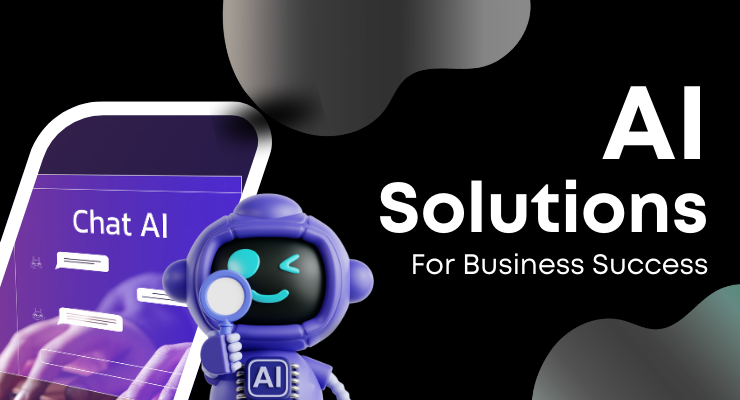AI Trends Reshaping the Business Landscape in 2025: Insights from United Business Solutions
As we navigate through 2025, artificial intelligence (AI) continues to revolutionize the business world. From enhancing operational efficiency to driving innovation, AI’s influence spans across industries. At United Business Solutions (UBSOLS), we are at the forefront of integrating these AI advancements to empower our clients. Here are the top AI trends transforming the business landscape this year:
- Generative AI Becomes Mainstream
Generative AI has transitioned from a novelty to a business necessity. Companies are leveraging tools like ChatGPT and DALL·E to automate content creation, design, and customer interactions. This shift enables businesses to produce high-quality outputs at scale, reducing time and costs.
Example: Marketing teams are using generative AI to craft personalized email campaigns, resulting in higher engagement rates and improved ROI.
- Rise of Agentic AI
Agentic AI refers to autonomous systems capable of making decisions and performing tasks without human intervention. These AI agents are being deployed in areas like customer service, cybersecurity, and supply chain management, enhancing efficiency and responsiveness.Wikipedia+1Axios+1
Example: Retailers are implementing AI agents to manage inventory levels, automatically reordering stock based on real-time sales data and trends.
- AI-Driven Personalization
Businesses are utilizing AI to deliver hyper-personalized experiences to customers. By analyzing user behavior and preferences, companies can tailor products, services, and communications to individual needs, fostering loyalty and satisfaction.
Example: Streaming services recommend content based on viewing history, while e-commerce platforms suggest products aligned with past purchases.
- Integration of AI in Decision-Making
AI is increasingly being used to support strategic decision-making. By processing vast amounts of data, AI provides insights that help leaders make informed choices, identify opportunities, and mitigate risks.
Example: Financial institutions employ AI to assess credit risk, enabling more accurate lending decisions and reducing default rates.
- Enhanced Cybersecurity Measures
With the rise of digital threats, AI plays a crucial role in cybersecurity. AI systems can detect anomalies, predict potential breaches, and respond to threats in real-time, safeguarding sensitive information.
Example: AI-driven security platforms monitor network traffic to identify and neutralize cyber threats before they cause harm.
- AI in Human Resources
Human Resources departments are adopting AI to streamline recruitment, employee engagement, and performance management. AI tools can screen resumes, schedule interviews, and even predict employee turnover.
Example: Companies use AI to analyze employee feedback, identifying areas for improvement and enhancing workplace satisfaction.
- AI-Powered Supply Chain Optimization
AI enhances supply chain operations by forecasting demand, optimizing routes, and managing inventory. This leads to cost savings, reduced waste, and improved customer service.
Example: Logistics firms utilize AI to predict delivery times, adjusting routes dynamically to avoid delays.
- Ethical AI and Governance
As AI becomes more prevalent, ethical considerations and governance frameworks are essential. Businesses are establishing guidelines to ensure AI is used responsibly, transparently, and without bias.
Example: Organizations implement AI ethics committees to oversee AI deployments, ensuring compliance with legal and societal standards.
- AI in Healthcare
The healthcare industry leverages AI for diagnostics, treatment planning, and patient monitoring. AI algorithms can analyze medical images, predict disease progression, and personalize treatment plans.
Example: Hospitals use AI to detect early signs of diseases like cancer, enabling timely interventions and improving patient outcomes.
- Continuous Learning and AI Literacy
To fully harness AI’s potential, organizations are investing in AI literacy and continuous learning. Training employees to understand and work alongside AI systems ensures seamless integration and maximizes benefits.
Example: Companies offer AI workshops and courses to upskill their workforce, fostering a culture of innovation and adaptability.


